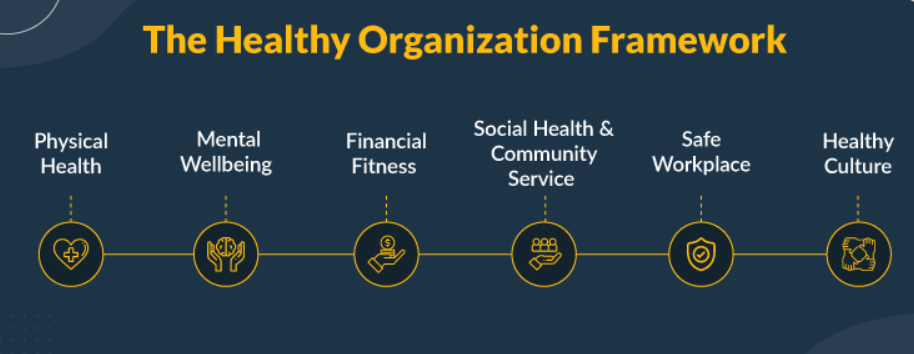Are you wondering what the human resource and business trends in 2023 will be like? You might be surprised to know that it is still extremely important to be aware of these trends.
In business, it is essential to keep aware of current human resources and business trends to stay ahead of the competition. By knowing the latest tools and techniques, you can improve your organizational performance and profits.
Human resources management is one of the most important functions in any company. It refers to the process of planning, implementing, and monitoring employee management systems and policies.
In recent years, Human resources has come a long way. Advancements in technology have made it easier for companies to onboard new employees, track their skills and performance, and review their feedback. If you want to remain competitive in the marketplace, it is important to stay on top of these latest innovations.
In this article, we will discuss some of the most important human resource and business trends that you should know.
HR Trends You Must Know
For businesses around the world, the last two years have been full of uncertainty as they sought to adapt after Covid. The way organisations operate has been changed by Covid-19, and 2023 is expected to push the boundaries of what HR can do to provide value. The following HR trends must be understood to influence business change and boost your company’s value in 2023 and beyond.
1: Shift to Hybrid Work
Work that is hybrid promotes cooperation, flexibility, and corporate transformation. Following the epidemic, 95% of HR leaders anticipate that at least some of their workforce will work remotely. A significant amount of change will result from the shift to hybrid work. HR executives must be prepared to assist it.
2: Digital Transformation
The number of businesses that use technology to manage their workforce or business operations grows yearly. HR workers will need to develop new skills to make use of technology at various stages as it is always evolving. They have to develop their digital literacy to comprehend fundamental algorithms. They will be able to choose the best technology for their firm by being able to ask vendors the correct questions.
3: Conversion from Employee’s Well-being to Healthy Organisation
The survey also revealed a 22% difference between employer and employee perceptions of well-being at work and found a direct link between toxic work environments and burnout.
What can we anticipate happening on that front?
The solution is found in “The Healthy Organization,” a more comprehensive and enterprise-wide strategy for well-being. This idea extends beyond the workers’ physical well-being and safety and attempts to give them more flexibility and opportunity for empowerment and training.

4: Change Management
Changes in an organization’s aims, processes, or technology are systematically addressed by change management. It attempts to put into effective techniques for executing changes, regulating them, and supporting people in adapting to them with the least possible obstacles.
Here are some things to think about as you plan your organization’s change management strategy:
- Venues for digital adoption to bring about change
- Early adopters and managers as change agents
- As part of the organisational culture, change
- Approach to change management that is data-driven
- Personalized change
5: Evolving Hiring Process
The management and measurement of the hiring process change are crucially dependent on HR. HR managers should take the lead in these improvements due to their experience and knowledge. Collaboration between all organisational departments will need to be improved for this.
HR has a responsibility to match employee skills with organisational and leadership demands. So, HR must be in charge of a variety of crucial procedures to make sure that the company can develop talent markets, encourage cooperation, and make data-driven decisions.
6: Working in the Metaverse
The metaverse workplace offers virtual reality settings so you can do business from any place in the world while working in a personalised immersive environment.
Digital workstations are designed within the metaverse so that employees can finish their tasks independently. The use of digital avatars also allows interactions and real-world experiences.
7: Need for Diversity & Inclusion
There is an increased push to improve diversity and inclusion in firms, in addition to the desire for more empathy and a more human workplace. Most HR stakeholders, both within and externally, are pushing for concrete advancements in leadership diversity. This will improve the working environment and increase productivity.
8: People Analytics
About 70% of firms utilise people analytics to boost performance, according to a Deloitte survey.
- Employee Experience: To better “feel” the organisation through data-driven employee experience/listening.
- Retention: To learn more about the labor market, significant competition developments, risk considerations, and more.
- Workforce Planning: To forecast manpower and skill expenses and make plans for them while controlling current costs.
- Talent Acquisition: For assessing the appropriate recruiting pace for the business’s market demands as well as the fairness of assessment and selection.
9: Building Skills and Competencies
Skills are more important than ever in determining how people are compensated. Currently, providers offer upskilling programmes that guarantee new employment in information technology or another industry. Organizations must also map out their internal skill sets. But, employees must also benefit from mapping expertise at the organizational level.
The talents one possesses are becoming a more important factor in compensation, retraining, and upskilling. Hence, understanding your skill set is essential for success in a competitive job market. As a result, employers are increasingly examining data-driven capabilities when making hiring decisions.
10: Virtual Employee Engagement
Working remotely due to physical distance can rapidly lead to isolation. Employees need to keep in mind that they are part of a team when they sit in front of their desks. That is what the current HR trend of virtual employee involvement seeks to accomplish.
Businesses are deliberately creating enjoyable activities to keep staff interested. With virtual board games, virtual karaoke, virtual treasure hunts, and other activities, members of several teams can collaborate. This promotes staff comfort, and collaboration better, and improves their work quality.
11: Remote Learning
The company model evolves as more workers work remotely. To be able to work with new technology, employees must grow and learn. Even before the pandemic, learning was a crucial component of the workforce.
E-learning and remote learning are both on the rise in the modern day. Here, workers can learn new skills via virtual classrooms, video lectures, and virtual tests. These online resources provide engaging, hands-on training on a wide range of subjects. Employees now have a wide range of options to work, concentrate on their areas of weakness, and learn how to improve them by allocating their generous amount of time when working remotely.
Conclusion
Organizations are being prompted to alter their workplace and workforce strategies by these most recent HR trends. The most exciting time to work in HR is now as a result of the top HR trends 2023, which constitute an urgent response. To strengthen the employee value proposition and promote business results, HR directors must change the way they identify, recruit, and retain important skills. They also need to revamp their work processes.
Follow The Corporate Demands for more information.
Know about What is Metaverse and how to get a job in Metaverse.

